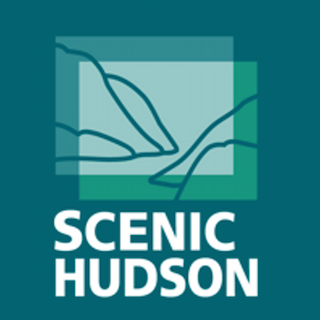 Must raise $10 million from other sources to receive grant monies
Must raise $10 million from other sources to receive grant monies
The Doris Duke Charitable Foundation has awarded Scenic Hudson a $2.3-million challenge grant for a visionary plan the national funder is confident will enhance land preservation regionally and nationally to help deal with climate change impacts. The Hudson Valley has one of the nation’s most diverse ecosystems, and its habitats, wildlife and farmland are important for public health and economic opportunity. Climate change and extreme weather already are beginning to stress these ecological resources.
At the doorstep of New York City and with its own growth pressures, the region’s natural assets must be saved to ensure resiliency. The grant recognizes Scenic Hudson’s leadership in regional land preservation efforts and the role land conservation will play in helping communities withstand climate change impacts.
New model moves from patchwork of preserved parcels to a network of strategically conserved areas
Scenic Hudson’s new Hudson Valley Conservation Strategy is generated from a computer model that helps target properties for preservation that will enable the region’s natural areas to withstand climate stresses. This approach includes conserving biodiversity, habitat connectivity and farmland, and it defines how much conservation is sufficient regionally. Moving beyond a random patchwork of parcels, it identifies networks of conservation areas that add up to more than the sum of their parts. Scenic Hudson is sharing the strategy with state and local governments and other conservation groups to ensure conservation investments maximize benefits.
The grant provides Scenic Hudson $2 million for land purchases and $300,000 for coordination and implementation of the initiative. Scenic Hudson is required to raise $10 million as a match to receive the grant dollars.
Across the country land preservation groups are struggling with climate change
Nationally, land conservation groups are grappling with ensuring that species and their habitats can adapt to climate change. Scenic Hudson’s new conservation strategy is a step forward in the Doris Duke Charitable Foundation’s efforts to support large-scale preservation for climate resilience in places that may change over time but still sustain biodiversity. Scenic Hudson’s pioneering strategy complements and builds upon its existing “Saving the Land That Matters Most” campaign and more recent Foodshed Conservation Plan to safeguard a system of family farms that provide fresh food for the Hudson Valley and New York City.
To make its new approach achievable, Scenic Hudson analyzed the region’s most important natural resources, how they function together, and what assets were already protected to chart the most efficient way to conserve the places needed for climate resiliency. The scientific effort defined a synergistic network of lands that, if conserved, would maximize the ability of the valley’s habitats to adapt to changing conditions, ensure connections and pathways so species can move across the landscape, and conserve landscape features on the region’s family-owned farms.
Scenic Hudson President Ned Sullivan said, “We are grateful to the Doris Duke Charitable Foundation for its vision and generosity in supporting a land conservation roadmap for the Hudson Valley. The foundation’s investments have enabled Scenic Hudson to continually advance its science-based land analysis and ramp up successes in achieving on-the-ground results that help make the valley vibrant and resilient in the face of climate impacts.”
“The Hudson Valley Conservation Strategy is an innovative and rigorous approach to securing a resilient, productive future for the region. It will help ensure that wildlife, nature and agriculture will continue to thrive in the face of climate change and other pressures,” said Ed Henry, president of the Doris Duke Charitable Foundation. “We’re happy to support Scenic Hudson and its many partners to advance this effort, which we hope will become a blueprint for land conservation elsewhere.”
Rich and varied mix of natural resources in Hudson Valley makes it ideal testing ground
The Hudson Valley Conservation Strategy encompasses an 11-county area. The plan pinpoints 760,000 “irreplaceable” acres, 16 percent of the area’s total land mass, as critical to making the region climate-resilient. Hudson Valley habitats are home to 85 percent of the State’s vertebrate species despite being just 15 percent of the State’s land area. The valley features globally significant concentrations of species and includes more than a dozen Important Bird Areas. The Hudson River supports nearly 200 species of fish.
Scenic Hudson Land Trust Executive Director Steve Rosenberg said, “The Hudson Valley is the ideal place for such a bold approach. It has strong land conservation groups that know how to work together, and the region’s mix of mountains, plains, farms and the Hudson River with its ocean influence makes it an ideal testing ground.”
“With this forward-thinking model, Scenic Hudson has taken state-of-the-art information on climate resilience, biodiversity and human uses, and woven it into something quite remarkable: a spatial plan for conserving the region’s remarkable natural diversity under a changing climate. Using data sets from The Nature Conservancy and the NY Natural Heritage program, and addressing human needs like working forest lands and food, as well as dynamic processes like sea level rise and river flow, the plan provides essential information for making land and water management decisions that ensure healthy human communities and sustained natural resources,” said Dr. Mark Anderson, director of Conservation Science for The Nature Conservancy, Eastern U.S. Division.
Reconnecting the Valley’s open space
Although the essential character of the region’s landscape remains intact, its biological richness faces unprecedented challenges. Compared to other regions of the country, the Valley’s natural fabric is much more fragmented, and over time this can compromise its sustainability.
The good news is that Scenic Hudson’s new plan and its data show that numerous Valley land areas represent “sweet spots” in which multiple conservation goals can be met with targeted investments. For example, in the critically important Hudson Highlands, the strategy identifies properties for preservation that will knit together the region’s already conserved lands. In another case, it identifies optimal ways to connect the Catskill Forest Preserve to the ridges, streams and wetlands near the Hudson River in Ulster and Greene counties. In the low-lying stretch of the Hudson River just south of Albany, the strategy identifies the most efficient ways to link tidal wetlands to adjacent upland areas that are critical for species migration in the face of climate change.
About the Doris Duke Charitable Foundation
The mission of the Doris Duke Charitable Foundation (DDCF) is to improve the quality of people’s lives through grants supporting the performing arts, environmental conservation, medical research and child well-being, and through preservation of the cultural and environmental legacy of Doris Duke’s properties. The Environment Program enables communities to protect and manage wildlife habitats and create efficiently-built environments. For more information, please visit www.ddcf.org.
About Scenic Hudson
Scenic Hudson works to protect and restore the Hudson River and its majestic landscape as an irreplaceable national treasure and a vital resource for residents and visitors. A crusader for the Valley since 1963, we are credited with saving fabled Storm King Mountain from a destructive industrial project and launching the modern grass-roots environmental movement. Today with more than 25,000 ardent supporters, we are the largest environmental group focused on the Hudson River Valley. Visit them on the web at www.scenichudson.org.







